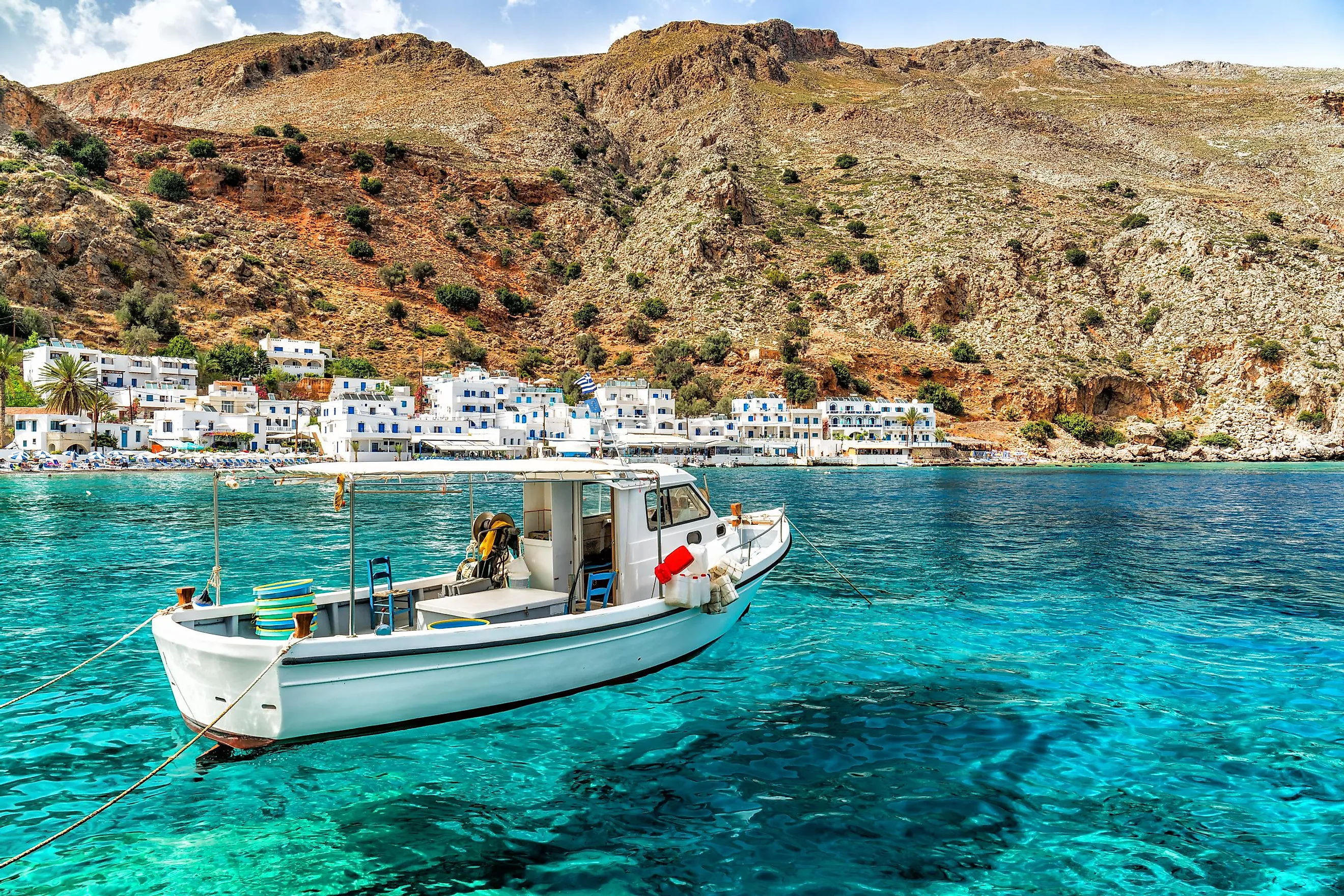
Crete
The sovereign nation of Greece comprises more than 1,400 islands. The island of Crete, located in the southern part of the Aegean Sea, is the world’s 88th largest island and also the largest among all the islands of Greece. Covering an area of 8,336 km2, Crete is the fifth-largest Mediterranean Sea island after the islands of Corsica, Cyprus, Sicily, and Sardinia. It is also the most populous among all the Aegean Islands and has a total population of around 635,000 inhabitants.
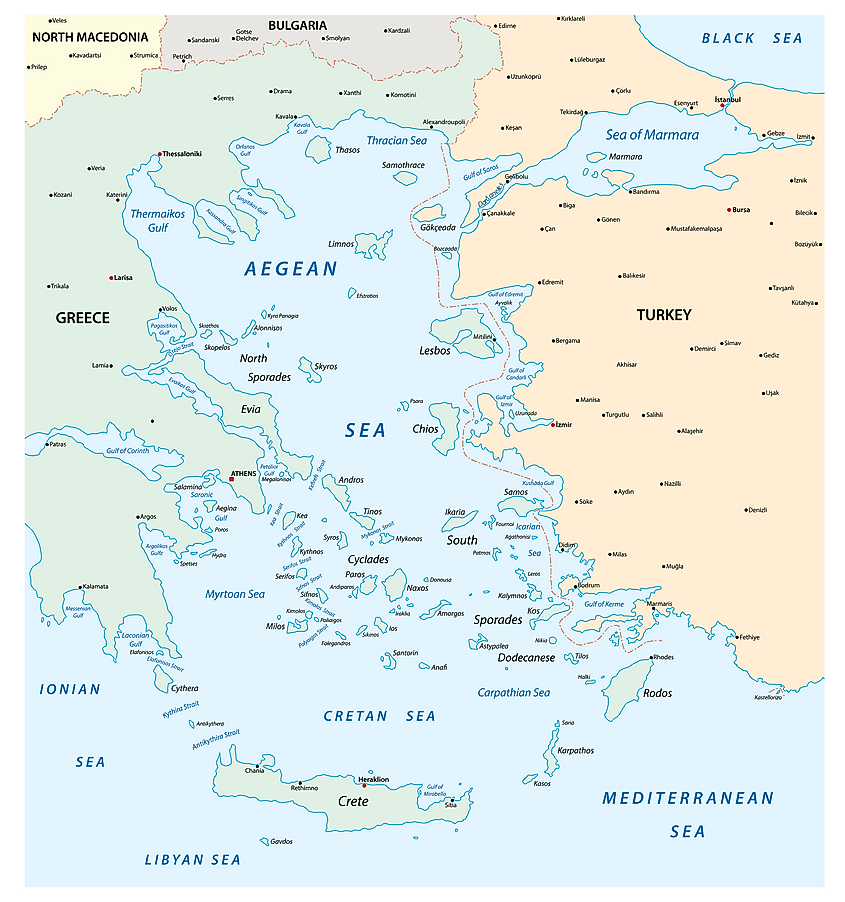
The island of Crete is situated in the southernmost part of the Aegean Sea. It is bordered by the Sea of Crete in the north, the Libyan Sea in the south, the Myrtoan Sea in the west and the Carpathian Sea in the east. The island is positioned about 160 km to the south of the mainland of Greece.
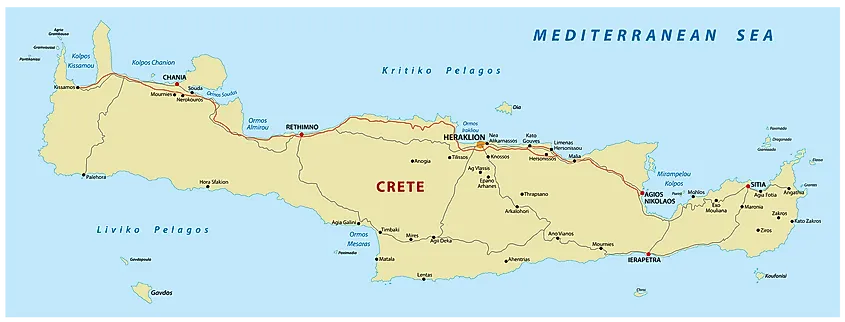
Geography
The island of Crete is elongated in shape and has a coastline of about 1,046 km. It stretches for about 260 km east-west and is about 60 km at its widest point. The island is dominated by rugged mountains that crisscross from west to east. The six different mountain groups on the island include the White Mountains (Lefká Ori), the Idi Range (Psiloritis), the Asterousia Mountains, the Kedros, the Díkti Mountains, and the Thripti mountains. Located in the west-central part of the island is Mount Ida, which rises to an elevation of 2,456 m and is the highest point in Crete. Several valleys, plateaus, caves, and gorges are created by these mountains, namely the Amari Valley, the Lasíthi, Nídha and Omalós plateaus, the Diktaion, Gourgouthakas, and Idaion caves, and the Imbros, Richtis, Samariá, and Kourtaliotiko gorges. The Samariá Gorge has been recognized by UNESCO as a World Biosphere Reserve.
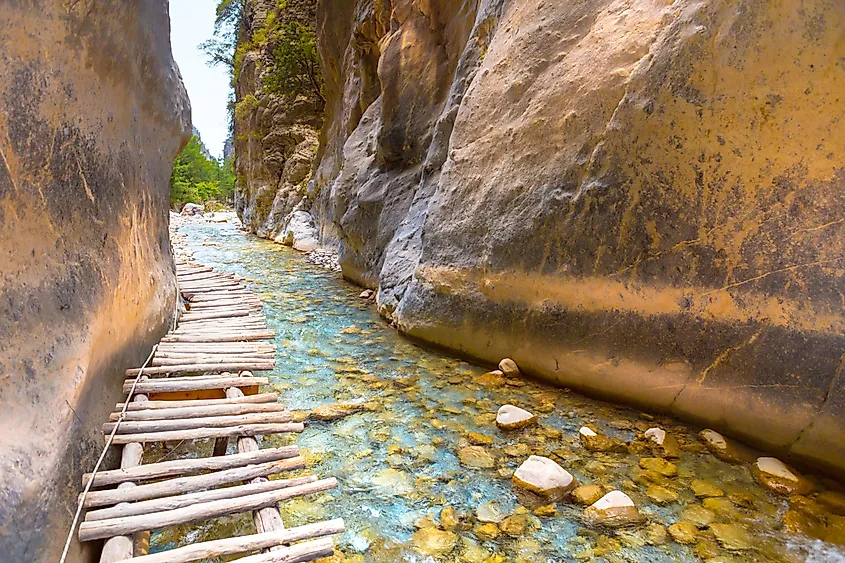
There are several rivers on the island of Crete which include the Anapodiaris, Almiros, Giofyros, Koiliaris, Ieropotamos, and the Megas Potamos rivers. Lake Agia and Lake Kournas are the two freshwater lakes on the island. Some artificial lakes have also been formed due to the construction of dams which include the Mpramiana Dam Lake, the Potamos Dam Lake, and the Aposelemis Dam Lake.
Several small islands and islets surround the island of Crete and together they constitute the Region of Crete. Some of the significant islands are Chrysi, Dionysades, Elafonisi, Gramvousa, Paximadia.
The Region of Crete is one of the 13 administrative regions of Greece. It is made up of the prefectures of Heraklion, Lasithi, Rethymno, and Chania. Situated on the island’s northern coast is Heraklion, the administrative capital and the largest city of Crete Island.
Brief History
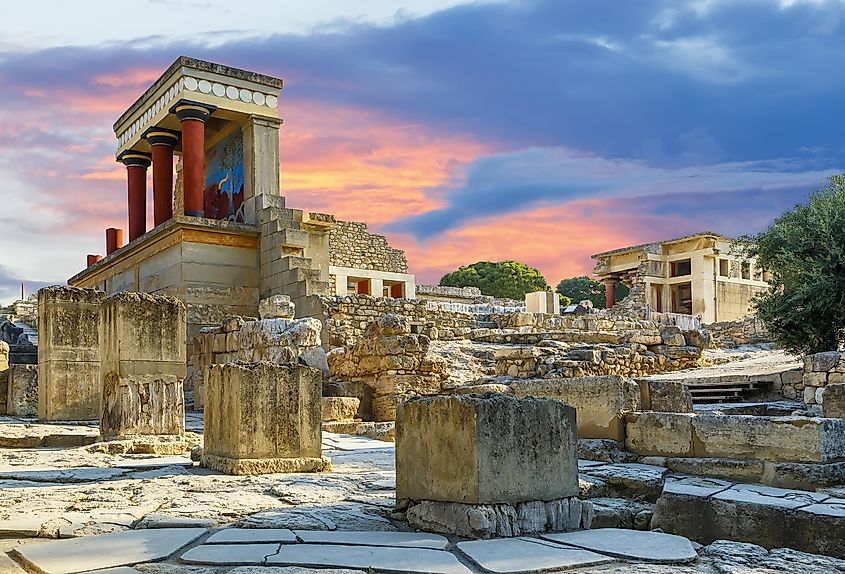
The island of Crete has been inhabited since the Paleolithic Age by early hominids. The earliest advanced European civilization, the Minoan Civilization, started on the island of Crete around 2700-1420 BCE. The Minoan Civilization ended after a major earthquake and thereafter the island’s rule was taken over by the Mycenaean Civilization. The island was then subsequently ruled by the Romans, the Byzantines, the Andalusians, the Venetians, and the Ottomans. After the island’s independence from Ottoman rule, Crete became a part of Greece. During the Second World War, the island was occupied by the Nazi German forces and also served as the battleground of the famous “Battle of Crete.”
The major economic activity on the island includes agriculture and tourism services. Production of olive oil, wine, vegetables, fruits, and dairy products including the special cheese varieties of mizithra, anthotiros, and kefalotyri is also important for the island’s economy. The Island of Crete also serves as one of Greece’s most popular vacation destinations.
Flora And Fauna
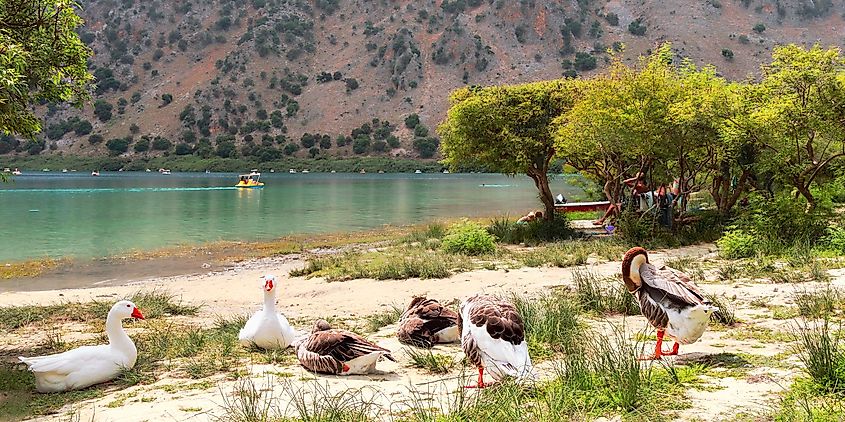
About 200 species of orchids are found on the island along with many wildflowers like daisy, gladiolus, tulip, poppy, etc. Insects like the cicada, swallowtail butterfly, hummingbird moth, and small-wood scorpion are also found. Different amphibians like the endemic Cretan marsh frog, European green toad, and different reptilian species like leopard snake, the dice snake, Balkan green lizard, and the Aegean wall lizard are found on the island. A large number of birds are found on the island including common cranes, pelicans, swallows, eagles like Bonelli’s eagle and golden eagle, bearded vultures, griffon vultures, peregrine falcons, tawny owls, little owls, red-billed choughs, and Eurasian hoopoes. The different mammalian species that are found on the island of Crete include the Cretan ibex, the Cretan badger, the Cretan spiny mouse, the Cretan weasel, the Cretan marten, the Cretan wildcat, the Cretan shrew, the long-eared hedgehog, and the edible dormouse. Different chiropteran species like the common pipistrelle, whiskered bat, Geoffrey’s bat, greater horseshoe bat, etc, are also found here.
In addition to these terrestrial mammals, the seas around the island host many marine mammals like the Mediterranean monk seal, along with different species of dolphins, porpoises, and whales. The two threatened species of sea turtles that are found here include the green turtle and the loggerhead turtle. Some of the significant fish that are found here are dusky grouper, scorpionfish, weever fish, five-spotted wrasse, common stingray, damselfish, etc.











